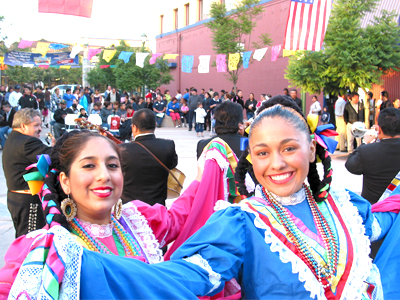
The roots of Cinco de Mayo ---
Contrary to popular belief, Cinco de Mayo is not an official Mexican revolution holiday. For the most part, it is only a north of the border celebration, which was made popular during the 1980´s by heavy marketing and outdoor events hosted mostly by beer companies. Some people may confuse this event with Mexican Independence Day, which occurred on September 16th, not on May 5th.
So what is it then that people celebrate on Cinco de Mayo? The date is observed in the United States as a celebration of Mexican heritage and pride, and if you ask anyone on the street, you will get a wide variety of mixed information, ranging from Mexican Independence Day to Cesar Chavez’s birthday. Some would actually make a vague mention of a battle that took place somewhere south of the border long ago, with little accuracy to the real historical event.
In a motion to make Cinco seem more official, the U.S. Congress issued a proclamation on June 7, 2005 to observe Cinco de Mayo with appropriate ceremonies and activities.
Studies have reported the impact of Cinco de Mayo in more states each year, making it of more significance than in Mexico. The date is best recognized to celebrate the culture of Americans of Mexican ancestry. Much as other ethnicities are used to celebrate heritage, many Americans regardless of ethnic background observe Cinco de Mayo.
The use of traditional symbols and imageries such as sombreros, maracas, folkloric costumes and dances, mariachis and the virgin of Guadalupe are part of the usual displays. Many use Chicano icons like Cesar Chavez, United Farm Workers and virtually any historical figure related to a struggle in the Hispanic heritage.
Some people go as far as bringing other revolutionary icons like Emiliano Zapata, Pancho Villa and Joaquin Murrieta, “¡viva la revolución!” Most people on the street would ignore the real heroes Benito Juarez and Ignacio Zaragoza, who defeated the 8,000-strong French army at Puebla, Mexico on Cinco de Mayo.
Mexicans and Latinos in general living in California are credited with being the first to celebrate Cinco de Mayo in the U.S. According to a UCLA article, the holiday has been observed and celebrated continuously in California, since 1863 (while virtually ignored in Mexico). TIME magazine reports it was popular during the 1940’s during the rise of the Chicano movement. UPI reports it crossed into the mainstream “in the 1950’s and 1960’s but didn’t get popular until the 80’s when marketers, especially beer companies, capitalized on the celebration nature of the day and began to promote it.”
In the Bay Area, there has been a historical increase of awareness, much more since the 1970’s when beer companies and other major corporate sponsors promoted parades and street fairs in San Jose, San Francisco and Oakland.
Regardless of the historical details of Cinco de Mayo, it is an excellent opportunity to maintain the cultural relevance and heritage in a celebration that has and can be enjoyed by all ethnicities and all ages. This May 5, 2012 falls on a Saturday and most festivities start as early as 10 am.